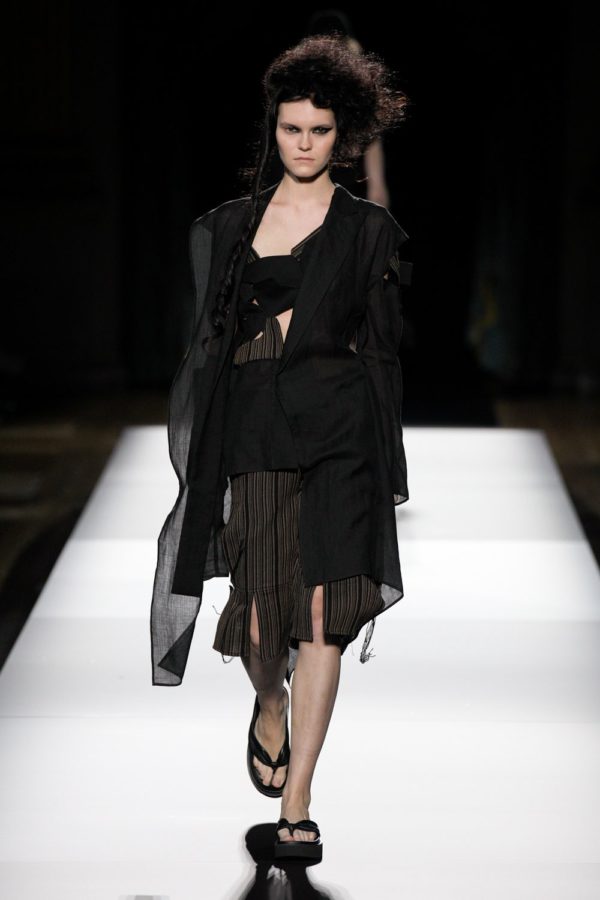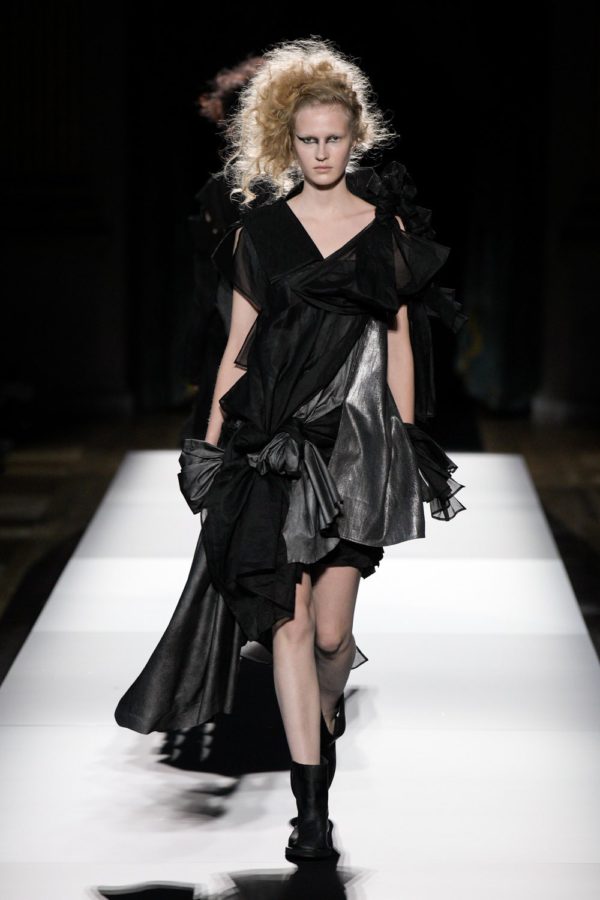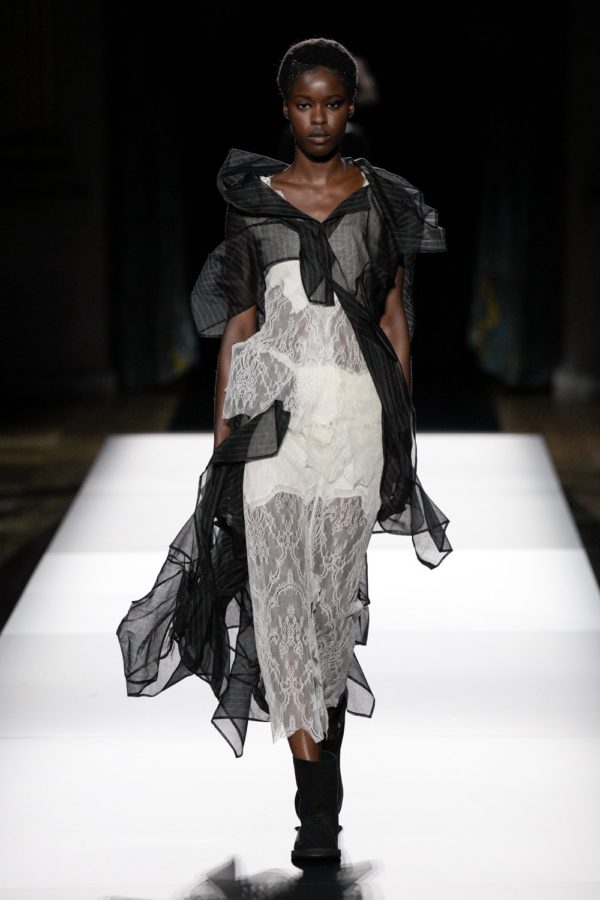In Yohji Yamamoto’s latest collection, the designer continues to navigate the delicate interplay between fragility and strength, offering a reflection on the complexities of modern femininity through a masterful manipulation of fabrics.
This season’s collection, characterized by its seemingly haphazard yet deeply intentional construction, evokes a narrative of reconstruction and resilience, suggesting a woman reassembling herself from remnants. The designs featured fragmented garments—straps left undone, jagged hems, and scraps of fabric reassembled—each piece contributing to an overarching aesthetic of raw transformation. Throughout the show, models moved in garments that felt simultaneously deconstructed and highly crafted, echoing a theme of reinvention. Long, buckled straps trailed behind as fabric swatches, some torn and others loosely stitched, jutted from skirts and dresses. These rugged details were softened by a smoky eye shadow encircling only one eye and the ethereal lace veils that half-obscured faces.
The duality of fragility and empowerment, a recurring motif in Yamamoto’s oeuvre, was palpable, resonating with similar themes explored by other designers this season. The emotional depth of the collection was underscored by the music, a poignant arrangement of Bach, Gluck, and Ravel, performed live by celebrated pianist Pavel Kolesnikov. As the show progressed, Kolesnikov’s sorrowful melodies gave way to a darker recording—Yamamoto’s remix of Leonard Cohen’s “You Want It Darker”. The haunting refrain—“Vilified, crucified, in the human frame / A million candles burning for the help that never came”—added a layer of existential reflection to the runway. Yet, despite these somber undercurrents, Yamamoto himself struck an optimistic tone, describing the collection as the work of “kids.” His lighthearted remark, “They made it!” offered insight into his playful approach to the season’s designs.
![]()
However, this playful spirit was far from simple. The intricate detailing and unconventional forms evidenced a level of difficulty far beyond child’s play. The collection’s rich texture combinations—foil, felt, lace, and gauze—were paired with a rejection of traditional construction methods. Despite the structural complexity, the models moved freely, hands nestled in cutouts and bodies draped in voluminous, twisted fabrics. One standout piece—a white lace dress overlaid with dark, gauzy pinstripes and extending into a dramatic train—embodied a mature, sophisticated vision. The unconventional forms also included reimagined hoop skirts that nodded to historical references, yet were firmly rooted in a futuristic aesthetic.
Yamamoto’s exploration of contradictions is a hallmark of his career, and this collection was no exception. Monochromatic shapes—blobby and loosely tacked to dresses—managed to exude an unexpected sophistication, while opulent swirls of denim and jacquard evoked an artful juxtaposition of luxury and roughness. The diversity of materials, appearing as though they were remnants from past collections, hinted at a deeper commentary on sustainability. When asked about the fabrics, Yamamoto’s response—“Very good and bad question. We made them.”—suggested both the intentionality and the playfulness behind his work.
The finale—a series of loosely structured red looks—brought the show to a somewhat abrupt close, like a statement left deliberately unfinished. Architect Jean Nouvel, in attendance, described the collection as embodying a beauty that was “at once sober and styled.” As is often the case with Yamamoto’s work, interpretation is left to the viewer, but the admiration was universal. The prolonged applause as the designer took his bow, accompanied by Kolesnikov, reflected a deep, collective appreciation for his continued innovation and artistic rigor. In this collection, Yamamoto once again proves that the space between fragility and strength, deconstruction and craftsmanship, is where his most powerful work resides.
www.yohjiyamamoto.co.jp
@yohjiyamamotoofficial




















